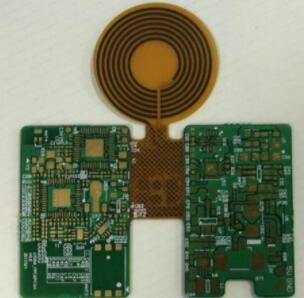Do you know "Why must the FPC be baked before the SMT can be used in the reflow furnace after the expiration date exceeds the shelf life"?
The main purpose of FPC baking is to remove moisture and moisture, and to remove the moisture contained in the FPC or absorbed from the outside, because some of the materials used in the FPC itself are easy to form water molecules.
In addition, after FPC is produced and placed for a period of time, there is a chance to absorb moisture in the environment, and water is one of the main killers of FPC popcorn or delamination.
Because when the FPC is placed in an environment with a temperature exceeding 100°C, such as a reflow furnace, wave soldering furnace, hot air leveling or hand welding, the water will turn into water vapor and then rapidly expand its volume.
The faster the heating speed of the FPC, the faster the expansion of water vapor; the higher the temperature, the larger the volume of water vapor; when the water vapor cannot escape from the FPC immediately, there is a good chance to expand the FPC .
In particular, the Z direction of the FPC is the most fragile. Sometimes the vias between the layers of the FPC may be broken, and sometimes it may cause the separation of the layers of the FPC. Even more serious, even the appearance of the FPC can be seen. Phenomenon such as blistering, swelling, bursting, etc.;
Sometimes even if the above phenomena are not visible on the FPC's appearance, it is actually internally injured. Over time, it will cause the function of electrical products to become unstable, or CAF and other problems will occur, which will eventually cause the product to fail.

Analysis of the true cause of FPC board bursting and countermeasures
The FPC baking procedure is actually quite troublesome. When baking, the original packaging must be removed before it can be put in the oven, and then it must be baked at a temperature exceeding 100°C, but the temperature should not be too high to avoid the baking period. Excessive expansion of water vapor will burst the FPC.
Generally, the temperature of FPC baking in the industry is mostly set at 120±5 degree Celsius to ensure that moisture can really be eliminated from the FPC body before it can be welded on the SMT line for reflow furnace welding.
The baking time varies with the thickness and size of the FPC. For thinner or larger FPCs, you must press the board with a heavy object after baking. This is to reduce or avoid the FPC The tragedy of bending deformation of FPC due to stress release during cooling after baking occurs.
Because once the FPC is deformed and bent, there will be offset or uneven thickness when printing solder paste in SMT, which will also cause a large number of solder short circuits or empty soldering defects during the subsequent reflow.